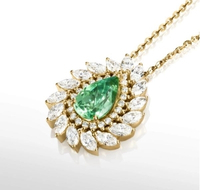No results for your search

Watches with Quartz Movement
Classima quartz 42 mm
BR S Grey Diamond Eagle quartz 39 mm
Heure H Small Model quartz 25 mm
Arceau Grand Modèle quartz 36 mm
Galop d'Hermès Medium Model quartz 32 mm
Galop d'Hermès Medium Model quartz 32 mm
Heure H Small Model quartz 25 mm
Arceau Grand Modèle quartz 40 mm
Cape Cod Small Model quartz 31 mm
Cape Cod Small Model quartz 31 mm
T-Sport T-Race Chronograph quartz 45 mm
Chronomat Lady Superquartz 28 mm
Chronomat Lady Superquartz 28 mm
Chronomat Lady Superquartz 28 mm
Chronomat Lady Superquartz 28 mm
Classima quartz 42 mm
Classima quartz 42 mm
Serpenti Tubogas quartz 35 mm
Serpenti Tubogas quartz 35 mm
Serpenti Tubogas quartz 35 mm
Lvcea quartz 28 mm
Lvcea quartz 28 mm
Serpenti Tubogas M quartz 35 mm
Serpenti quartz 27 mm
Serpenti quartz 27 mm
Serpenti Tubogas quartz 35 mm
Bvlgari Bvlgari Lady quartz 33 mm
Serpenti Seduttori quartz 33 mm
Classique Lady Quartz 26 mm
Bvlgari Bvlgari Lady quartz 33 mm
Serpenti Tubogas quartz 35 mm
Serpenti Seduttori quartz 33 mm
Bvlgari Bvlgari Lady quartz 33 mm
Serpenti Tubogas quartz 35 mm
Serpenti Tubogas quartz 35 mm
- Watches with Quartz Movement
- Watches with Automatic Movement
- Watches with Manufacture Automatic Movement
- Watches with Manufacture Manual Winding Mechanical Movement
- Watches with Solar Quartz Movement
- Watches with Hybrid Movement
- Watches with Eco-Drive Movement
- Watches with Connected Movement
- Watches with leather strap
- Watches with steel bracelet
Quartz watches are less prestigious than mechanical watches, as they do not demonstrate the same watchmaking expertise. However, they are much more accurate. The quartz movement consists of an electronic circuit driven by a battery, the energy of which is used to vibrate a quartz oscillator. Quartz watches are relatively recent in the watchmaking world, since their invention dates back to the 1960s. It was Seiko who initiated the very first model, the Seiko 35SQ in 1969. The heart of the electronic quartz movement consists of an electrical circuit driven by a battery. It is this battery that diffuses the energy necessary for the vibration of the quartz oscillator, otherwise known as the piezoelectric effect. Quartz watches are ultra-precise and are designed for people who are looking for reliability. Powered by a battery, a quartz watch is actually more economical than a mechanical watch. More specifically, it is an electronic movement with an electrical circuit. The battery serves as a motor to distribute the current. Thus, when subjected to this electric current, the quartz crystal vibrates very quickly and regularly. The number of vibrations can then be calculated from this frequency to measure the time elapsed. The battery has a lifespan of up to several years, during which time there will be no need for servicing or maintenance, unlike mechanical watches. The quartz watch has two display modes. Analogue (with hands) and digital. For the latter, the electronic circuit transmits the display data directly to the liquid crystal screen. If there is one quality that is the prerogative of quartz watches, it is precision. Its battery driven movement is of an irreproachable reliability. The margin of error for a quartz watch is calculated in tenths of seconds (of delay or advance), whereas it can reach several seconds, even minutes, for a mechanical watch. We won't talk about a defect here, but rather about a certain lack of authenticity. It is true that watch lovers appreciate above all the watchmaking know-how and craftsmanship hidden in the case of a mechanical watch. But that is a matter of taste !






.jpg)
.png)

